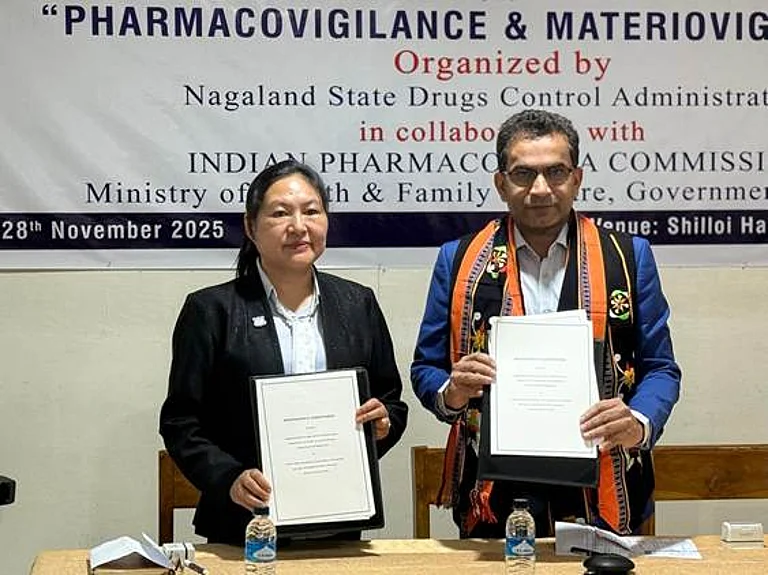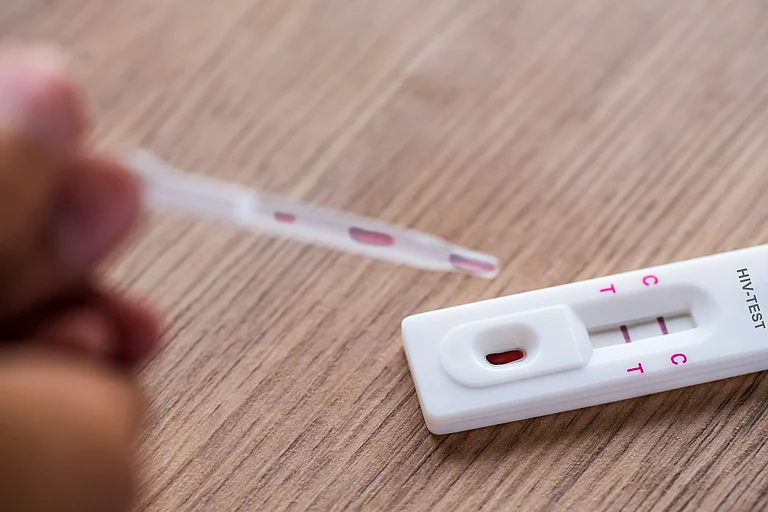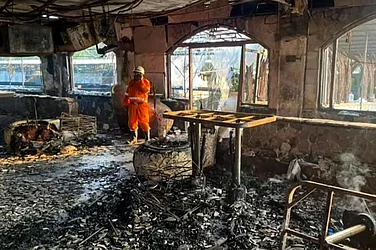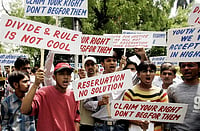Scientists on Wednesday declared that a patient appears to have been cured of HIV infection, which would make him only the fourth person in history to have been cured of HIV.
The 66-year-old American man has had HIV since 1980s. He is being referred to as the "City of Hope" patient after the City of Hope National Medical Center in America's California where he was treated, as he has opted to be anonymous.
Like the three previous patients who were declared cured from HIV, the City of Hope patient was also suffering from cancer and received bone marrow transplant.
Here we explain what's HIV-AIDS, how does bone marrow transplant work, what are its significance, and what's the status of research for a broader cure for HIV.
What's HIV-AIDS, why it has no broad cure
HIV stands for Human Immunodeficiency Virus. It damages the immune system.
Untreated HIV kills CD4 cells, a type of immune cells, and as it keeps killing more and more such cells over time, it makes the person more likely to get various types of conditions such as cancers, according to Healthline.
HIV is trasmitted through bodily fluids that include blood, semen, vaginal and rectal fluids, and breast milk.
There is currently no cure for HIV but it can be managed with antiretroviral therapy, which makes it possible for HIV positive people to have near-normal lifespan.
AIDS, short for Acquired Immune Deficiency Syndrome, is the most advanced form of HIV infection. Healthline explains: "Healthy adults generally have a CD4 count of 500 to 1,600 per cubic millimeter. A person with HIV whose CD4 count falls below 200 per cubic millimeter will be diagnosed with AIDS."
There is no cure to HIV yet as the virus "persists inside stable reservoirs that cannot be detected by the immune system", according to the Science of HIV Project. Antiretroviral therapy can 'manage' HIV but not cure it.
The Science of HIV notes, "Unfortunately, antiretroviral therapy is not a cure for HIV. This is due to HIV’s ability to hide its instructions inside of cells where drugs cannot reach it. During the HIV life cycle, HIV incorporates itself into its host cell's DNA. Antiretroviral therapies can stop new viruses that might be produced from infecting new cells, but can’t eliminate the viral DNA from the host cell’s genome.
"Most host cells will be killed by infection or will eventually die of old age, but a very small number of cells appear to live for a very long time in the body. Every so often, the viral DNA can get turned on, and the cell starts to produce new virus."
What's bone marrow transplant that cured HIV
While there is no broad cure yet for HIV, four people have indeed been cured of HIV by a treatment option that can be availed by a select group of people.
These are bone marrow transplants that can be availed by only those HIV patients who also have cancer. As mentioned earlier, HIV compromises a person's immune system which makes the person vulnerable to several conditions including cancer.
Bone marrow transplant is a treatment that involves killing nearly all immune cells of a person with either radiotherapy or drugs, and then replacing them with cells from a donor who is naturally resistant to HIV because of a rare but natural mutation in a gene called CCR5, according to New Scientist.
It should be noted that this cure is only suited for HIV patients with cancer as it's very dangerous and remains only the last resort. This is not a cure for general HIV patients.
However, experts are hopeful that such a method could in future help in other ways.
"But the fact that the approach seems to work could point the way to other strategies for a cure. One possible method might be to use gene editing to mutate the CCR5 gene in a person’s own immune cells," notes New Scientist.
What is HIV-resistant CCR5 gene?
A genetic mutation known as CCR-delta 32 leads to HIV resistance in some people.
Nature journal explains: "CCR5-delta 32 hampers HIV's ability to infiltrate immune cells. The mutation causes the CCR5 co-receptor on the outside of cells to develop smaller than usual and no longer sit outside of the cell. CCR5 co-receptor is like door that allows HIV entrance into the cell. The CCR5-delta 32 mutation in a sense locks 'the door' which prevents HIV from entering into the cell."
Around 1 per cent of people descended from Northern Europeans, particularly Swedes, have such HIV resistance, according to Nature. Bone marrow donated by such people can be used for treatment of HIV patients with advanced cancers, as mentioned above.
What do we know about the 'City of Hope' patient?
The 66-year-old 'City of Hope' patient was the oldest person to undergo bone-marrow transplant. He was then cured of both HIV and cancer, according to a statement from City of Hope National Medical Center.
The hospital further noted, "Since recovering from his transplant, the City of Hope patient has not shown any evidence of having replicating HIV virus in his body, either in blood or tissue samples."
The City of Hope patient said, "When I was diagnosed with HIV in 1988, like many others, I thought it was a death sentence. I never thought I would live to see the day that I no longer have HIV. City of Hope made that possible, and I am beyond grateful."
How close are we to HIV cure?
As mentioned earlier in the article, while four people have indeed been cured of HIV, their treatment cannot be opted by around 40 million HIV patients worldwide.
Besides "hiding" in our own cells, as listed above, another reason why a cure or vaccine against HIV has not been possible so far is that the virus mutates rapidly, according to Gladstone Institutes.
It notes that scientists have tried to bring out the "hiding" virus into view and then kill it with antiretroviral drugs in what's known as "shock and kill" strategy, but it has not worked out so far.
While there is theorital understanding of how a broader cure for HIV would work, their practical application is still years away and research is ongoing.
WebMD explains potential cures: "Scientists believe it would take a two-part treatment to wipe out HIV in a person's body. The first part would involve drugs that make the cells in the HIV reservoir multiply and express proteins that are like a signal to your immune system. The second part would include drugs that detect those protein signals, then seek out and kill the virus."
However, it also cautions that it's not expected to happen soon.
"It could be a few years before these treatments are tested to be sure they work well and are safe to use in many people who have HIV," notes WebMD.


























